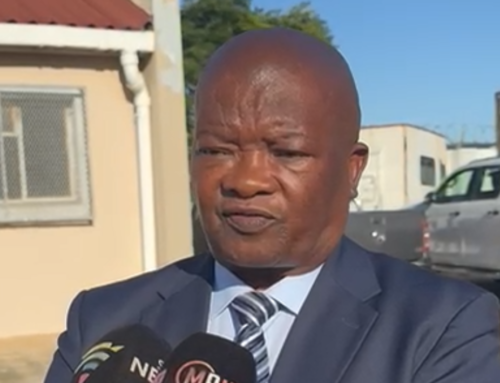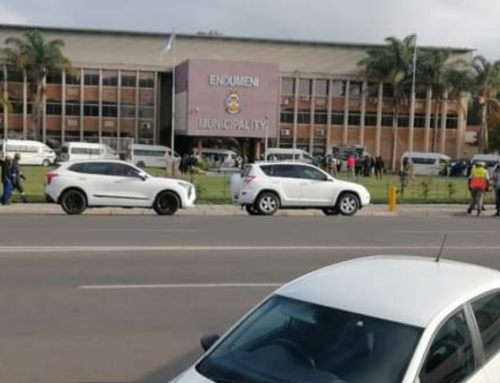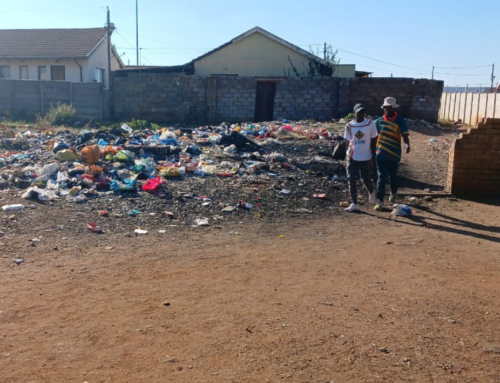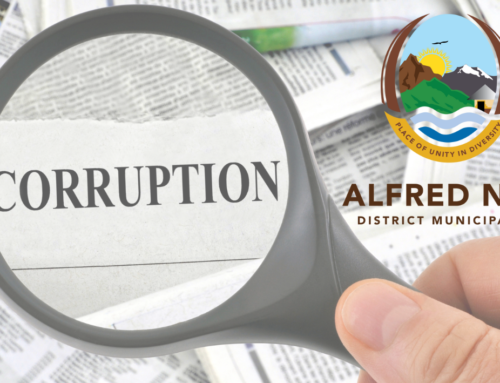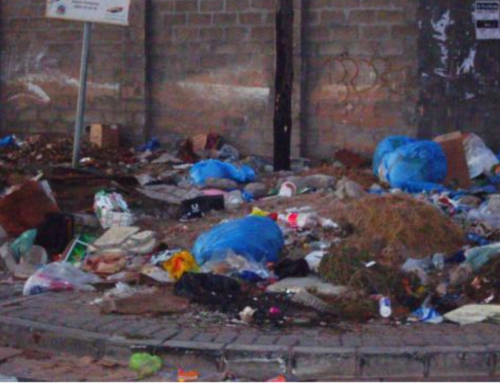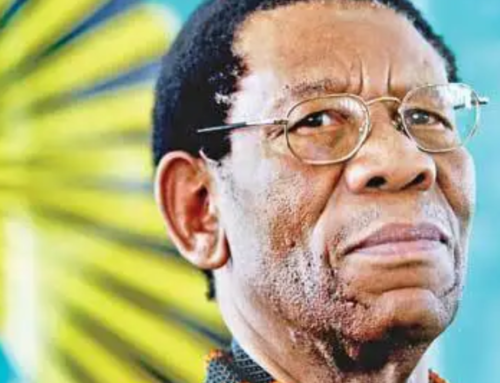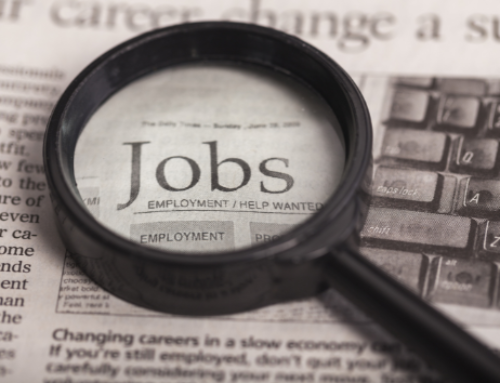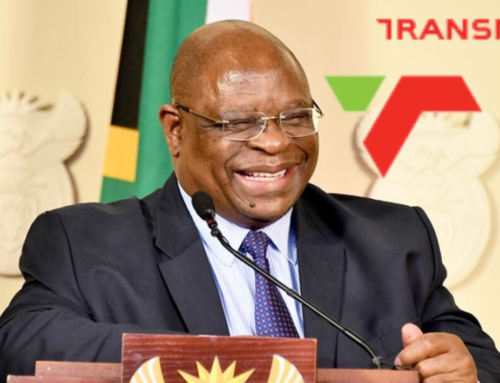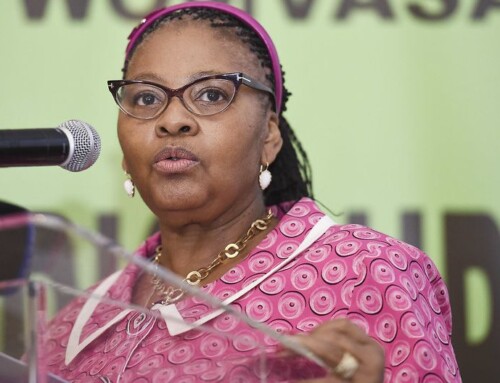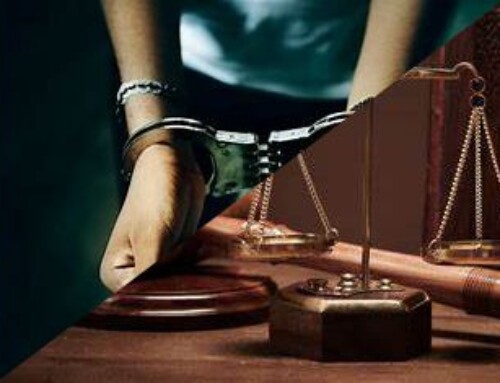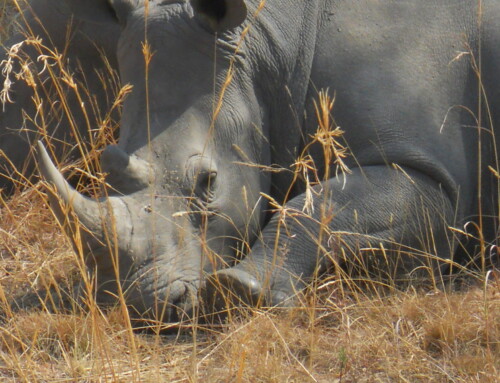 Oral submission to the Standing Committee on Public Accounts by Mr Bantu Holomisa, MP regarding
Oral submission to the Standing Committee on Public Accounts by Mr Bantu Holomisa, MP regarding
Allegations of maladministration, mismanagement, and corruption at the
Development Bank of Southern Africa
18 November 2020, from 09:00 to 11:00
I wish to express the United Democratic Movement’s (UDM) sincere thanks to the chairperson and the members of the Standing Committee on Public Accounts’ (Scopa) for this opportunity to address it.
1. Introduction
1.1. We all agree on the strategic importance of the Development Bank of Southern Africa (DBSA) and yet, considering my recent experience, it seems as if it has been left to its own devices and it may not be as well-run as we hope.
1.2. With at least one other state funding agency, the Public Investment Corporation (PIC), it was a case of; where there was smoke there was fire. I have relied on Scopa for assistance so that it can look at the warning signs that have been brought to my attention, so that it in turn can apply its collective mind and decide whether that warrants an inquiry and what kind of term of reference should such an enquiry be armed with.
1.3. I want to clarify that I had been, on separate occasions during 2020, approached by different sources with information regarding alleged wrongdoings at the DBSA, which I had compiled and shared in main with Scopa in the letter of 23 October 2020.
1.4. I would like to start off this session by sharing new information that has come to light since my letter to you, but the latter part of this presentation contains the initial submission for the sake of completeness and for the record.
1.5. In addition, the committee should please take note that some information had also, in the meantime, been exposed in the public domain by The Sunday Times on 8 November 2020 (Annexure A) and I took the liberty of contacting two of the former board members mentioned in the article.
2. Strange ministerial correspondence and the announcement of the appointment of the new DBSA board
2.1. I table two letters that were purportedly sent by Finance Minister Mboweni to now former board member, Ms Bulelwa Ndamase, which show certain peculiarities which caused some unease in my mind.
2.2. The first is a fairly curt and unreferenced letter, dated 30 September 2020 (date typed), informing Ms Ndamase of the expiry of her term of service as a non-executive director. She was given no reasons for not extending her period of service after her having served only one term.
2.3. By extension of this topic, it is also important to note that the DBSA used the “effluxion of time”-excuse to get rid of Ms Ndamase and two of her colleagues, but it chose to keep five other members to “retain valuable knowledge, skills and experience and maintain continuity within the Board”. (Annexure D)
It would be interesting to know what logic exactly set these two groups apart. For all the rationalisation and defending the DBSA has done, it is interesting that it is at least two of the “independent two” who did not “toe the Godongwana line”, who saw themselves unceremoniously shown the door.
2.4. The second letter, now with the traditional detailed reference, dated 11 November 2020 (date written in pen) is addressed to Ms Ndamase using the DBSA’s postal address. Why would the minister do use the DBSA postal address if he clearly is aware that she is no longer associated with the DBSA since 30 September 2020?
The content of the letter clearly is the minister’s considered response to correspondence that Ms Ndamase had written to the minister informing him of the Cranbrook matter and her subsequent experiences. The entire tone of the letter suggests that the minister regards Ms Ndamase as a member of the board and very much still part of the DBSA establishment.
2.5. Comparing these two letters, something very unusual is going on. I find it extremely irregular that a ministerial letter, and this is not just a run-of-the-mill administrative letter, has absolutely no reference number.
I also understand that the DBSA forwarded these letters directly to the affected board members i.e. it did not come from the ministry’s registry, which adds another piece to this puzzle.
Could it be that someone forged this letter? Does someone at the DBSA have the electronic signature of this minister and what havoc are they wreaking?
2.6. Another bit of strangeness, the new DBSA board was seemingly announced on 5 October 2020, and the information is available on the DBSA website . However, ordinarily any such board appointments go in tandem with some media fanfare, but one would be hard-pressed to find a media article to that effect in the popular media. A simple Google search will leave you to wonder if the media outlets even were aware that the DBSA had a new board.
2.7. One does not have to be a conspiracy theorist to read between these lines and arrive at very unsettling questions about exactly what process was followed with the selection process and appointment of the new DBSA board, and who exactly the role-players were.
3. Mr Enoch Godongwana may have too many skeletons in his cupboard of the wrong kind
3.1. Just as we can agree on the strategic importance of the DBSA, we must agree that it is imperative that the chairperson of the board of such a government financial entity has an unblemished record.
3.2. Aside from the fact that Mr Godongwana is of course a well-known politically exposed person (PEP), the governmental due diligence reports that have been conducted on him, which I have seen, paints a picture of a man with less than sterling credentials.
3.3. These due diligence reports, for example, state that:
3.3.1. Around 2003/4 Mr Godongwana had been implicated (as the then MEC for economic development of the Eastern Cape), together with Mr Mcebisi Jonas (then CEO of the Eastern Cape Development Corporation), Mr Stone Sizani, as well as the then premier, Rev Arnold Stofile, in serious fraudulent misconduct involving millions of Rands. The Eastern Cape High Court, Grahamstown had later set aside the report of the Commission of Inquiry into the Finances of the Eastern Cape and declared it a nullity and of no force and effect.
3.3.2. In June 2011, Mr Godongwana was accused of being linked to Canyon Springs Investments 12 which allegedly disappeared with R100 million in workers’ pensions belonging to the Clothing and Textile Workers’ Union. The money allegedly went missing after a trust company he had chaired from 2007-2009 apparently lent money to Canyon Springs which it subsequently “lost”. Mr Godongwana and his wife had a 50% interest in Canyon Springs, and although they were allegedly served summonses and offered to repay R1,5 million, nothing happened, and the company was seemingly liquidated.
3.3.3. Another questionable deal includes alleged payments made by the Recycling and Economic Development Initiative of SA (REDISA) to Mr Godongwana and his wife, and another prominent ruling party leader. REDISA (now apparently currently in liquidation) allegedly made monthly payments of R100 000 to Isivuno Consulting from February 2015 to February 2017 which reportedly has Enoch and Thandiwe Godongwana registered as its directors. Recommendations were allegedly made for the Hawks to investigate, but apparently no clear decision has been forthcoming regarding this investigation.
3.4. It is alleged that the Minister was fully aware of these allegations and still appointed Mr Godongwana as the DBSA’s board chairperson and given this information.
3.5. I reiterate my assertion that by virtue of his PEP-status, he should in the first instance never have been asked to head a government financial intuition and I find it rather disconcerting that the minister went ahead with the appointment having this information at his disposal.
4. The reaction of the DBSA’s top brass
4.1. The DBSA chose to respond to the allegations made in my submission to Scopa, which was posted on the bank’s website on 6 November 2020.
4.2. I would like to make the following observations:
4.3. Firstly, the response is anonymous or without owner. Who exactly is defending the DBSA here and then the honour of the chairperson of the board? The chairperson and/or the board, the CEO, the entire executive, the company secretary? Who?
4.3.1. Secondly, that the DBSA was selective in terms of which allegations it chose to respond to, which I do not quite understand. Why not respond to all of it, in the same blow-by-blow fashion it chose to answer some of the allegations and arguments?
4.3.2. Thirdly, the DBSA was at great pains to refuse to give me information on the Poseidon Water Project and even refused my Public Access to Information Act application based on what I believe to be technicalities they chose to hide behind. Yet they chose to reveal information about the Cranbrook deal without any worry. It is also most convenient that the DBSA commissioned an “independent investigation” into the Poseidon deal even before the President attended to the matter as addressed to him in my letters of 17 June 2020 and 20 July 2020.
4.3.3. Fourthly, the DBSA’s “version of the story”, as contained on this webpage, differs from the information my sources have provided and even from the facts as contained in the bank’s own documentation – which I have in my possession – and what is under dispute. Only a proper investigation and comparison of these versions would establish the facts. The DBSA merely posting a piece of text on the internet cannot be the litmus test of truth.
4.3.4. Lastly, the DBSA is denying for the sake of denying. They specifically state about Mr Godongwana that it “followed an enhanced due diligence” and I know that, because I have seen this due diligence as I have said. The point being, following an enhanced due diligence does not mean that the due diligence must be ignored.
4.4. Now that we know who the role-players are, as revealed in the Sunday Times, Scopa could call them to account for themselves.
5. Case Study 1: Poseidon Water Project – PEPs’ access to public funds
5.1. For the sake of completeness, I here below repeat the information I had previously shared in my letter to Scopa on 23 October 2020, with a few additional bits of information that I thought would enhance understanding.
5.2. Earlier this year the DBSA funded a company called Poseidon, which allegedly had links to Harith General Partners, a company that had not been painted in a favourable light by the Mpati Commission.
5.3. In fact, the Mpati Commission said that: “Harith’s conduct was driven by financial reward to its employees and management, and not by returns to the GEPF. In essence, the PIC initiative, created in keeping with government vision and PIC funding was ‘privatised’ such that those PIC employees and office bearers originally appointed to establish the various Funds and companies reaped rich rewards.”
5.4. Poseidon was allegedly funded to the tune of R50 million to conduct feasibility studies, for some kind of water project/s in South Africa and other Southern African countries. At that time, another R300 million was apparently still to be disbursed for the implementation of Poseidon’s project.
5.5. It is important to know that Poseidon’s shareholding is allegedly as follows and the importance will become apparent, once the role-players in these parent companies are revealed. The first is a screenshot of a DBSA document and the second is just our rendition to make the information clearer.




5.6. The information about Poseidon (see below screenshot of a DBSA document) pertains to the PEPs in Poseidon’s group structure and it reads like a veritable Who’s Who of directors of public owned entities:


5.7. It would appear that some of these PEPs are allegedly accessing government funding at the DBSA, the same way they allegedly accessed funding at the PIC. I had written to President Ramaphosa about this case on 17 June 2020, but to date have not received any response.
5.8. Even before the President’s response I noticed that the DBSA had commissioned an “independent inquiry” into Poseidon’s pedigree and never consulted us who made the allegations in the first instance. Needless to say, the so-called independent inquiry which the DBSA powers that be commissioned and paid for, would have a predetermined outcome.
5.9. The Harith General Partners, Jabu Moleketi, Tshepo Mahoele, Lungile Cele, Roshan Morar, Alix-Mary Lugemwa have in the meantime taken the UDM and I to court in an effort to gag us from exposing alleged corruption relating to Poseidon. In the first instance they withdrew their urgent application and were ordered to pay the UDM’s costs and yesterday lost another urgent application with costs in the High Court. (See Annexure H for the details of the full judgement)
6. Case Study 2: Cranbrook Property Projects (Pty) Ltd
6.1. Quite a while after the Poseidon saga, that the matter of Cranbrook Property Projects popped onto my radar through different anonymous sources and my initial sense, that something was wrong at the DBSA, received confirmation.
6.2. The entire saga relates to the alleged mismanagement and maladministration of three loans that the DBSA had allegedly extended to three entities: Blue Horison Investments 11 (BH 11), Moeparutsi Properties and Proline Trading 60 (PT 60), all which apparently form part of Cranbrook Property Projects (Cranbrook).
6.3. The total of the outstanding loans allegedly stood at R426 million, including accumulated interest, and there were no evidence of any repayments since disbursing the loans in the mid-2000s, aside from an alleged partial repayment on the BH 11 loan.
6.4. In the end, the DBSA allegedly approved the write-back of hundreds of millions of Rands in interest according to the ‘in duplum-rule’, but also wrote off a R259 million. I again highlight some of the salient allegations:
6.5. Moeparutsi Properties (Pty) Ltd
• In 2007, the DBSA loaned R10 million to one Shokeng Mahlake and one Mashupye Matlala to acquire 17% of the shares in Cranbrook as part of a BEE deal.
• There have been no repayments of the loan after 2012 and no letters of demand have ever been issued for the outstanding obligation.
• No such an entity, “Moeparutsi Properties (Pty) Ltd”, has ever been registered with the Companies and Intellectual Property Commission.
• The original loan agreements were very poorly drafted – missing registration numbers and identity numbers for the individual sureties.
• The DBSA does not have any contact or financial information on the borrower or any of the sureties on record.
• The loan was absurdly enough, directly deposited into Cranbrook’s account.
• The board recently wrote off this debt, because it cannot locate the borrowers. I was however able to locate the identity numbers of the borrowers, which means the DBSA’s Business Support and Recovery Unit (BSRU) did not exhaust all avenues in locating them (see paragraph 6.12).
6.6. Blue Horison Investments 11 (Pty) Ltd
• In 2007, the DBSA loaned R124 million to BH 11 to develop the Ledibeng Eco Estate in Lephalale, Limpopo. Sixty-five percent of the loan was repaid, but this is unsubstantiated.
• BH 11 was placed under liquidation in 2017 and the liquidator’s attorney had apparently hinted, to the DBSA, at potential fraudulent transactions and that funds may have been disbursed to the benefit of certain directors and to the detriment of the Cranbrook group and its creditors.
• The BSRU asked the board to agree to a carve-out, in favour of the DBSA, of up to R20 million as suggested by the liquidator’s attorney. This is irregular, as the relevant legislation prescribes a fair distribution of an insolvent company’s assets for the benefit of the general body of creditors.
• There was also a request to write back the interest of R11,6 million which the BSRU argued exceeded the amount which may be claimed in terms of in duplum and to cease any further interest charges.
6.7. Proline Trading 60 (Pty) Ltd
• In 2008, the DBSA approved a further loan of R125 million for PT 60 as funding required to install municipal services for the Spekboom River Estate in Burgersfort, Limpopo, which Cranbrook would later develop.
• The granting of facilities to PT 60 was as part of a ‘greater restructuring of the Cranbrook loans’ which was agreed to at that time. This seems to be and odd arrangement for the DBSA to have entertained.
• The DBSA never issued any letters of breach and/or letters of demand to the debtor.
• PT 60 continues to be in default with its obligations and the total debt due is over R311 million, which reportedly constitutes the total unpaid debt and the accrued interest.
• Although the loan was secured by a mortgage bond, the value of the property is currently worth R61.8 million at forced sale value according to the BSRU.
• The BSRU requested that legal action against the individual sureties be delayed until the underlying secured properties in PT 60 have been disposed of in order to ensure the directors’ cooperation with the proposed legal process; as well as the write-back of interest which has exceeded the amount which may be claimed in terms of in duplum and to cease any further interest charges in light of in duplum.
6.8. There is a considered legal opinion that the DBSA Business Support and Recovery Unit (BSRU) did not apply the ‘in duplum-rule’ correctly in the BH11 and PT 60 deals and it begs the question, in how many other deals has this been the case.
The DBSA, in a response it published on its website dated 6 November 2020, naturally disagrees with here, but these opposing views can easily be tested.
6.9. It also appears that the BSRU has also for years been negligent in its monitoring of this bad debt and it wanted to cause the Audit, Risk and Finance Committee to make decisions that would in effect excuse this negligence. There has also allegedly been a conspicuous material non-disclosure by the BSRU in its reporting memo to the board and that false assurances were also allegedly given that entities on the “non-performing list” were in fact being monitored.
6.10. There are clear signs that this entire transaction might constitute “BEE-fronting” and that the DBSA has, whether it be wittingly or unwittingly, been a party to that and now that the BSRU has woken up to the bad debt, the board is seemingly being asked to depart from its fiduciary duties and to implement a total write-off on a transaction which apparently amounts to fraud and theft.
6.11. Lastly, aside from the larger principles at stake here, there seems to be deficiencies in the DBSA’s administration with a cacophony of alleged errors, maladministration and mismanagement e.g. apparently decisions were made without honouring internal systems, poorly written contracts, lack of identity and entity numbers, no follow-up was done (for years) when the borrowers neglected payments. The problem here is that, where there is smoke there is fire, and this might not be an isolated incident of shoddy administration.
6.12. A simple desk-top search produced a prospectus of the entire Cranbrook Group (Annexure I) containing information in some respects contradicts the information that the BSRU presented to the board, it is therefore not clear who is apparently telling which lies to whom. What the exact picture of Cranbrook was at inception (as per the prospectus), and what was presented to the DBSA at the time the loans were approved, and what the BSRU recently presented to the board must be reviewed forensically.
7. Victimisation of certain board members and irregular reformation of the board
7.1. Earlier this year, it appears that the chairperson of the board, Mr Enoch Godongwana, unilaterally wrote to the Finance Minister about two vacancies and the reappointment of eight executive-directors, all of whom had been eligible for reappointment.
The board apparently had no knowledge of his actions and there allegedly were board members who were unhappy with the entire process and the chairperson’s actions on the board’s behalf without its knowledge.
7.2. What happened simultaneously was that a now former board member allegedly dared to question the Cranbrook and other matters, and then had allegedly been the target of malicious actions by the chairperson and the senior DBSA management who, as far as the United Democratic Movement is concerned, has shown their true colours.
7.3. The seemingly petty actions of the chairperson include his alleged instruction to the DBSA officials that this former board member’s fees be withheld for two months. This allegedly happened after the DBSA management out of the blue recalled all the electronic devices it issued to board members, and some executive staff, under the pretext of a forensic investigation to establish leaks. But it could rather seem like an effort to tamper with ICT to cover acts of corruption, by the very same people who were being questioned by this board member.
7.4. To give further context to the sophistication of the alleged manipulation, it is alleged that when the Cranbrook matter arose at board level, the company secretary asked for outside legal opinions on the situation. Those legal opinions apparently clearly advised that the entire Cranbrook matter had to be investigated forensically. That advice was allegedly wilfully ignored and the DBSA management’s scramble to have board members’ access to the DBSA’s IT systems revoked and electronic devices recalled smack of wrong-doing and a concerted cover-up effort. The former board member under discussion’s refusal to return the tablet was therefore for a good reason and ultimately correct.
7.5. Subsequent to all these shenanigans, this person’s board membership was ended through what seems to be a concerted effort of the chairperson to rid the DBSA of a board member who would not toe the line of condoning alleged maladministration and corruption. Even though an “independent executive search firm” was apparently appointed, albeit under allegedly irregular conditions, Finance Minister Mboweni had still decreed that the appointment process should be led by Mr Godongwana, whom I believe had compromised himself with a clear bias towards the aforementioned former board member.
7.6. I understand that Minister Mboweni, was made aware that the appointment of the “independent executive search firm” had allegedly unilaterally been done by the chairperson in contravention of the DBSA’s internal processes and without the knowledge of the board and without the involvement of the Board Human Resources and Nominations Committee. As far as I am aware, the minister did not act, which is evidenced by the continuation of processes that led to the recent announcement of the new board, which of course excluded the board members who refused to toe the chairperson’s line.
7.7. Incidentally, the DBSA board of directors is constituted in terms of the DBSA Act 13 of 1997, yet, in 23 years, the regulations in terms of which the Minister of Finance must make these appointments have apparently never been promulgated. This must surely be addressed.
7.8. It was unsettling to hear that the troika of the chairperson, the chief executive officer, Mr Patrick Dlamini, and the company secretary, Ms Bathobile Sowazi, were ruling the roost at the DBSA to the extent that there are allegations that some board members were being offered favours and that the some members, were wilfully being frustrated in fulfilling their duties. The fact that there are allegations that the company secretary has been tampering with board meeting minutes is disconcerting.
8. The case of Ms Irene Charnley
8.1. For Scopa’s consumption, I also in June 2020 addressed with the President, the matter of Ms Irene Charnley and her inclusion on the PIC’s interim board, whose term has since been extended. Her company, Smile Telecoms Limited, received ±R1,7 billion (in today’s terms) from the PIC. I had also written to Finance Minister Tito Mboweni about this matter on 3 June 2020, but received no answer (Annexure J). Since writing that letter, I had been informed that the PIC has written-off the R1,7 billion.
Moreover, Ms Charnley allegedly also received a USD 20 million DBSA loan, which she has allegedly failed to pay back. The Al Nahla Group, with whom she is partnered, is a Saudi Arabia-based company, which might mean that the PIC and DBSA’s monies were channelled out of South Africa on purpose. This must be investigated.
9. Request to Scopa
9.1.1. Given the President’s and the Finance Minister’s inattention to the various matters as I have described, I believe it would behove Scopa to look into:
9.1.2. The entire circumstances of the loans provided to Cranbrook and Poseidon, but in particular the DBSA’s so-called “watch-list” of investments that are in distress and its register of loans and the repayment statuses.
9.1.3. The DBSA’s administration i.e. the basics of record-keeping, having proper contracts in place, issuing timeous letters of demand for loans, etc.
9.1.4. The implication that the DBSA chairperson, board and/or senior management’s overlooking and/or covering-up of maladministration, mismanagement and possibly massive corruption.
9.1.5. The allegations of the DBSA chairperson and senior management’s victimisation of the Ms Ndamase whose only crime appears to have been her desire fulfil the fiduciary duties expected of any board member.
9.1.6. Urgently effecting the payment of the board fees for August and September that are due to the Ms Ndamase that had been withheld for specious reasons.
9.1.7. The Minister of Finance be made to explain the strangeness around the correspondence to Ms Ndamase.
9.1.8. The appointment of Ms Charnley, given her track-record, and establishing what value she adds to the PIC board.
9.1.9. The phenomenon of double-dipping, where one company accesses public funding (in any form) from more than one government funding institution, is certainly something that needs careful consideration. There appears to be a loophole in the system that seems to be actively exploited by PEPs and other ruthless individuals
9.1.10. The ease with which international entities can access South African funds, as funds are leaving our shores, instead of international investment being made here.
I thank you





